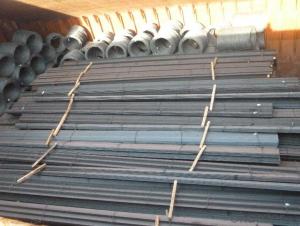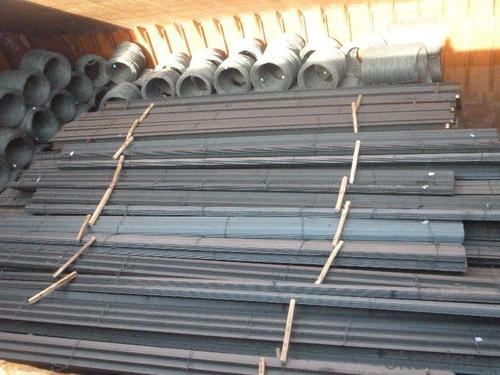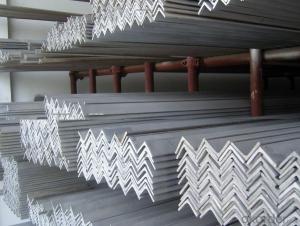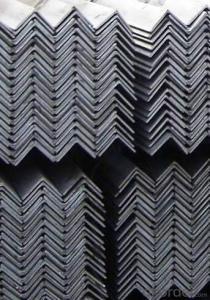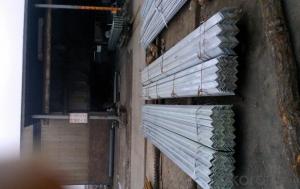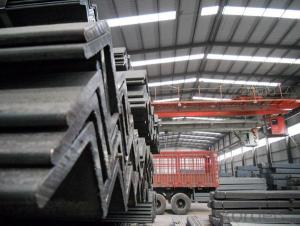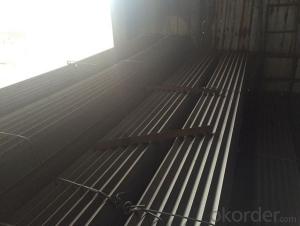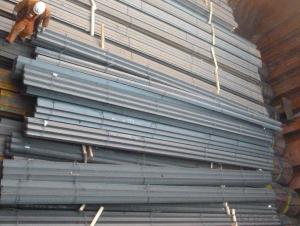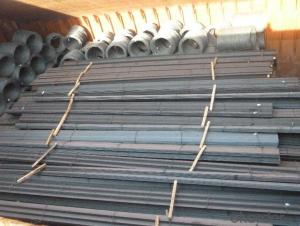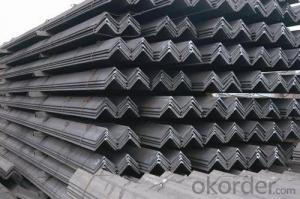Hot Rolled Steel Equal Bars for Construction of Warehouses
- Loading Port:
- Tianjin
- Payment Terms:
- TT OR LC
- Min Order Qty:
- 25 m.t.
- Supply Capability:
- 200000 m.t./month
OKorder Service Pledge
OKorder Financial Service
You Might Also Like
Product Description:
OKorder is offering Hot Rolled Steel Equal Bars for Construction of Warehouses at great prices with worldwide shipping. Our supplier is a world-class manufacturer of steel, with our products utilized the world over. OKorder annually supplies products to European, North American and Asian markets. We provide quotations within 24 hours of receiving an inquiry and guarantee competitive prices.
Product Applications:
Hot Rolled Steel Equal Bars for Construction of Warehouses are ideal for structural applications and are widely used in the construction of buildings and bridges, and the manufacturing, petrochemical, and transportation industries.
1. Supporting members, most commonly in the house raising industry to strengthen timber bears under houses. Transmission line towers, etc
2. Prefabricated structure
3. Medium scale bridges
4. It is widely used in various building structures and engineering structures such as roof beams, bridges, transmission towers, hoisting machinery and transport machinery, ships, industrial furnaces, reaction tower, container frame and warehouse etc.
Product Advantages:
Hot Rolled Steel Equal Bars for Construction of Warehouses are durable, strong, and resist corrosion.
Main Product Features:
· Premium quality
· Prompt delivery & seaworthy packing (30 days after receiving deposit)
· Corrosion resistance
· Can be recycled and reused
· Mill test certification
· Professional Service
· Competitive pricing
Product Specifications:
1.Standards:GB,ASTM,BS,AISI,DIN,JIS
2.Length:6m,9m,12m
3.Material:GBQ235B,Q345BorEquivalent;ASTMA36;EN10025,S235JR,S355JR;JISG3192,SS400;SS540.
4. Sizes
Sizes: 25mm-250mm | ||
a*t | ||
25*2.5-4.0 | 70*6.0-9.0 | 130*9.0-15 |
30*2.5-6.6 | 75*6.0-9.0 | 140*10-14 |
36*3.0-5.0 | 80*5.0-10 | 150*10-20 |
38*2.3-6.0 | 90*7.0-10 | 160*10-16 |
40*3.0-5.0 | 100*6.0-12 | 175*12-15 |
45*4.0-6.0 | 110*8.0-10 | 180*12-18 |
50*4.0-6.0 | 120*6.0-15 | 200*14-25 |
60*4.0-8.0 | 125*8.0-14 | 250*25 |
5.Material details:
Alloy No | Grade | Element (%) | |||||
C | Mn | S | P | Si | |||
Q235 | B | 0.12—0.20 | 0.3—0.7 | ≤0.045 | ≤0.045 | ≤0.3 | |
Alloy No | Grade | Yielding strength point( Mpa) | |||||
Thickness (mm) | |||||||
≤16 | >16--40 | >40--60 | >60--100 | ||||
≥ | |||||||
Q235 | B | 235 | 225 | 215 | 205 | ||
Alloy No | Grade | Tensile strength (Mpa) | Elongation after fracture (%) | ||||
Thickness (mm) | |||||||
≤16 | >16--40 | >40--60 | >60--100 | ||||
≥ | |||||||
Q235 | B | 375--500 | 26 | 25 | 24 | 23 | |
FAQ:
Q1: How do we guarantee the quality of Hot Rolled Steel Equal Bars for Construction of Warehouses?
A1: We have established an advanced quality management system which conducts strict quality tests at every step, from raw materials to the final product. At the same time, we provide extensive follow-up service assurances as required.
Q2: Can fit in the containers of 20fts Hot Rolled Steel Equal Bars of 6M?
A2: No problem, we can put them into the containers in the form sideling.
Q3: The products are invoicing on theoritical weight or on actual weight?
A3: We can do it in both manners, according to the customers' requestof 6M?
- Q: Can steel angles be used in staircases?
- Yes, steel angles can be used in staircases. Steel angles are commonly used as structural components in staircases for their strength and durability. They provide support and stability to the staircase design, making them a suitable choice for construction purposes.
- Q: Can steel angles be used in the construction of agricultural buildings?
- Yes, steel angles can be used in the construction of agricultural buildings. Steel angles are commonly used as structural components for framing, bracing, and supporting various elements in agricultural buildings such as walls, roofs, and machinery. They provide strength, stability, and durability, making them suitable for withstanding the load and environmental conditions typically encountered in agricultural settings.
- Q: Can steel angles be used for manufacturing balcony structures?
- Yes, steel angles can be used for manufacturing balcony structures. Steel angles provide structural support and stability to balcony structures, making them a suitable choice for their construction.
- Q: Can steel angles be used for support columns in building construction?
- Yes, steel angles can be used for support columns in building construction. Steel angles are commonly used in construction due to their strength, durability, and versatility. They provide excellent support and stability when used as columns, especially in small to medium-sized buildings. Additionally, steel angles are easy to fabricate and can be customized to meet specific design requirements. They are also resistant to fire, corrosion, and pests, making them a reliable choice for support columns in building construction.
- Q: Can steel angles be bent or formed?
- Yes, steel angles can be bent or formed. Steel angles are commonly used structural elements that are made from steel and have an L-shaped cross-section. They can be bent or formed using various methods such as hot or cold bending, rolling, or press-braking. The specific method used will depend on factors such as the desired angle, radius of bending, and the thickness and type of steel being used. Bending or forming steel angles allows for the creation of different shapes and angles to suit specific structural or design requirements.
- Q: Can steel angles be used in high-rise or multi-story buildings?
- Yes, steel angles can be used in high-rise or multi-story buildings. Steel angles are commonly used in construction due to their high strength, versatility, and cost-effectiveness. In high-rise buildings, steel angles are often utilized for various structural elements such as beams, columns, and bracing systems. They provide excellent support for transferring loads and forces within the building, contributing to the overall stability and structural integrity. Moreover, steel angles can be easily fabricated and installed, allowing for efficient construction processes in large-scale projects. Therefore, steel angles are widely accepted and utilized in the construction of high-rise or multi-story buildings.
- Q: How do steel angles perform under fatigue or repeated loading conditions?
- Due to their ability to endure repeated loading conditions, including fatigue, steel angles are widely used in structural applications. The fatigue performance of steel angles is influenced by various factors, such as material properties, design, and loading conditions. Typically, high-strength steel is used to manufacture steel angles, which possess outstanding fatigue resistance. These steels have a high fatigue strength, allowing them to withstand numerous cycles of loading before failure occurs. The fatigue strength of steel angles can be enhanced further by implementing techniques like heat treatment or surface hardening. The geometry of the steel angle is a critical aspect in its fatigue performance. Sharp corners or notches can act as points of stress concentration, leading to accelerated initiation and propagation of fatigue cracks. Hence, it is crucial to consider factors like fillet radii and smooth transitions when designing steel angles for applications prone to fatigue. The fatigue behavior of steel angles is also influenced by the loading conditions. The magnitude and frequency of applied loads, along with additional factors like corrosion or temperature variations, can impact the fatigue life of the angles. Comprehensive analysis and testing are necessary to determine the expected fatigue life and ensure the dependable performance of steel angles under repeated loading conditions. Overall, steel angles are renowned for their exceptional performance under fatigue or repeated loading conditions. By considering material properties, design factors, and loading conditions, engineers can optimize the fatigue resistance of steel angles for specific applications, guaranteeing their long-term durability and reliability.
- Q: Are steel angles suitable for high-rise buildings?
- Steel angles, otherwise referred to as L-shaped structural steel, are a fitting choice for the construction of high-rise buildings. This is primarily due to their robustness and adaptability. In particular, they provide essential support and stability to the building, particularly in cases where there is a need to transfer both vertical and horizontal loads. Moreover, steel angles possess a remarkable ability to withstand substantial stress and can easily be tailored to meet specific building requirements. Furthermore, they are cost-effective and possess a notable strength-to-weight ratio, rendering them highly suitable for high-rise construction endeavors. Ultimately, steel angles possess the vital attributes of strength, endurance, and versatility that are indispensable in the construction of high-rise buildings.
- Q: Can steel angles be used in industrial or heavy-duty applications?
- Yes, steel angles can be widely used in industrial or heavy-duty applications due to their high strength, durability, and versatility. They are commonly utilized in construction, infrastructure, manufacturing, and fabrication industries for various purposes such as supporting structures, framing, bracing, and reinforcement. Their ability to withstand heavy loads and provide stability makes them suitable for demanding environments where strength and resilience are crucial.
- Q: Can steel angles be used in mezzanine flooring systems?
- Indeed, mezzanine flooring systems can incorporate steel angles. In the realm of mezzanine construction, steel angles are frequently employed as structural components due to their remarkable robustness and longevity. Whether utilized as supports, beams, or bracing elements, steel angles offer stability and an impressive load-bearing capacity to mezzanine flooring systems. Moreover, steel angles are adaptable and can be readily tailored and installed to meet precise design specifications. Additionally, they present a cost-effective and dependable solution for generating extra floor area in industrial and commercial edifices.
Send your message to us
Hot Rolled Steel Equal Bars for Construction of Warehouses
- Loading Port:
- Tianjin
- Payment Terms:
- TT OR LC
- Min Order Qty:
- 25 m.t.
- Supply Capability:
- 200000 m.t./month
OKorder Service Pledge
OKorder Financial Service
Similar products
Hot products
Hot Searches
Related keywords
